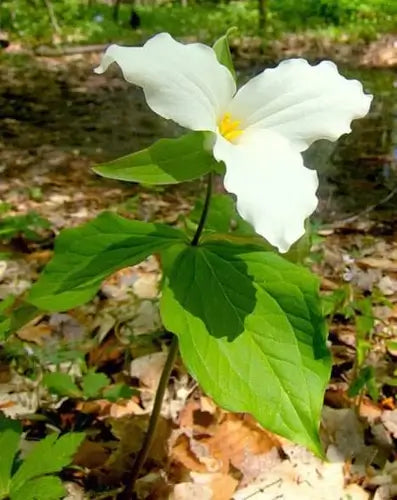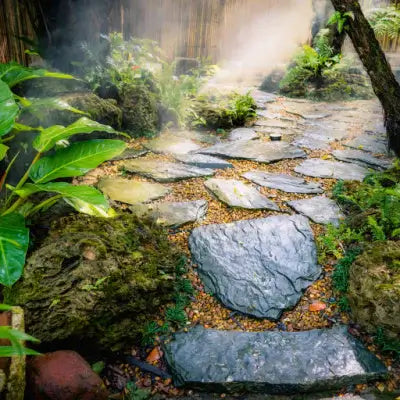Tn Nursery Reviews Are Excellent - Consider Us For All Your Planting Needs
Discovering Black Walnut trees on a property tends to leave property owners overjoyed initially. These prized hardwoods mature to 150 feet tall with a shade span of 75 feet wide. Coupled with the prized nuts that run over 2.5 inches, that Black Walnut tree seems like a gem.
But after a variety of perennial plants, shrubs, and vegetable gardens fail on the land, homeowners suspect something in the environment is damaging other vegetation. Even a cursory online search points to the Black Walnut as the culprit. It seems the tree succeeds by effectively poisoning others in the surrounding area. That's terrible news for gardening enthusiasts and homeowners who desire a rich landscape. The following landscape management information could prove invaluable if you have Black Walnut trees on your property.
Why Are Black Walnut Trees Toxic To Other Plant Life?
Black Walnuts earned a notorious reputation for exuding a chemical called "Juglone." Found in its roots, nut hulls, leaves, stems, and seasonal buds, juglone leaks into the soil under and around the tree's canopy. Falling leaves and root spread can expand its toxic radius. Adding insult to injury, should a property owner decide to remove the thorny tree, its decaying roots can impact the soil for years.
The range of perennials, vegetables, shrubs, and other trees that suffer juglone toxicity generally experience symptoms within a 60-foot radius of the tree's trunk. Many will present with yellowing leaves, stunted growth, and wilt before dying. While some landscape assets and vegetables can survive a Black Walnut tree's kill radius, susceptible varieties falter within a few months.
It's not uncommon for home and commercial property owners to initially blame disease or environmental factors. And although other tree varieties such as Pecan, Butternut, English Walnut, and the Shagbark Hickory also produce juglone, their lower concentrations of the plant-killing agent often prove less problematic.
Managing Plants That Struggle Near A Black Walnut Tree
Property owners who want to create a landscape that reflects their taste may have some hard choices when Black Walnut trees are present. High levels of juglone can eliminate vegetable gardens and especially prized tomatoes. But there are ways to minimize the impact by identifying the following sensitive plants and taking proactive measures.
- Columbine
- Asparagus
- Chrysanthemums
- Hydrangeas
- Lilies
- Narcissus
- Peonies
- Cabbage
- Peppers
- Eggplant
- Potatoes
It's possible to limit the contact of juglone by creating gardens outside the Black Walnut canopy. Consider using raised beds after removing roots below the surface. These plants can mature by remaining vigilant about keeping falling leaves and nut husks out of your gardens. However, protecting sensitive ornamental shrubs such as Red Chokeberry, Privet, Rhododendrons, and Lilac may not be feasible.
Which Perennial Plants & Shrubs Can Survive Black Walnut Trees?
It's entirely understandable for a property owner to hesitate about removing a mature Black Walnut tree. These strong hardwoods withstand severe winds and provide admirable shade relief during hot summer days. The deliciously sweet nuts are also an excellent added value. That being said, selecting from a lengthy list of juglone-resistant perennials and flowering shrubs could provide a viable landscaping solution. These rank among the juglone-tolerant landscaping assets worth considering.
- Aster
- Black-Eyed Susan
- Bloodroot
- Daffodil
- Daylily
- Forsythia
- Honeysuckle Vine
- Hosta
- Iris
- Jack-in-the-Pulpit
- Phlox
- Purple Coneflower
- Trillium
- Virginia Bluebell
- Virginia Creeper
- Wild Ginger
- Wisteria
- Yarrow
A wide range of valued trees also tolerates juglone reasonably well. These include the fruit-bearing Pawpaw and Maples, American Beech, Tulip trees, Box Elder, Flowering Dogwood, Willow, and Oak varieties.
Gardening enthusiasts should remember that these and other varieties are considered "tolerant" to juglone. That does not necessarily ensure they will flourish when the chemical makes contact or infiltrates shared soil. Some will likely thrive, while others seem to tough out the conditions. Those are reasons why many property owners have Black Walnut trees and their roots removed, sell off the valuable timber, and start fresh.
Top Tree Options To Replace Black Walnuts
Property owners may want to consider specific variables when selecting the best tree to take the place of a mature Black Walnut. The hardwood likely offered significant shade with its wide canopy and leaf density. Replacing that aspect of the landscape lends itself to choosing a fast-growing shade tree. Choosing one that tolerates remnants of juglone in the soil is also wise. The following meet those criteria.
- American Elm Tree
- Box Elder
- Maple Trees
- Oak Trees
- Sassafras Tree
- Sweet Gum Tree
- Willow Trees
These trees can grow up to 2 feet or more annually and provide sweeping canopies worthy of replacing a Black Walnut. Property owners who view tree removal as an opportunity to go in a different landscape direction may want to consider ornamental trees. Some of the more popular landscaping assets include the following.
- Crepe Myrtle
- Red Maple Tree
- Redbud Trees
- White Dogwood Tree
- Wild Plum Tree
Depending on the exiting Black Walnut location, large flowering shrubs can also fill the void and infuse colorful seasonal blooms. Rose of Sharon and Witch Hazel rank among the popular shrubberies.
We hope this overview of plant, shrub, and tree management helps everyday people make informed decisions about their landscapes. We provide a complete inventory of perennial plants, shrubs, and trees that tolerate Black Walnut juglone as well as replacements. If you would like to place an order or have any related questions, contact our TN Nursery today.
































































